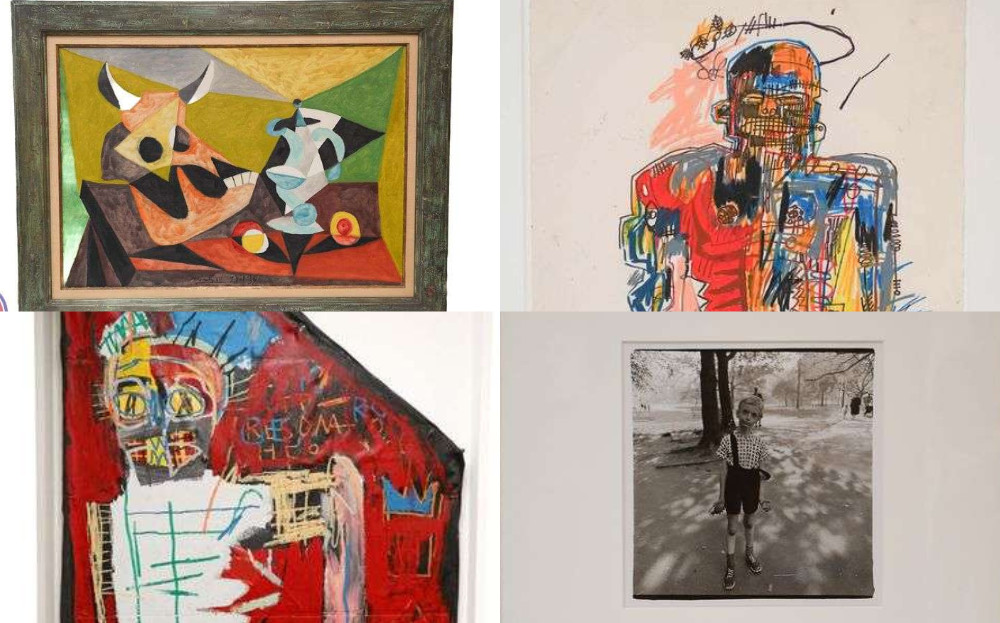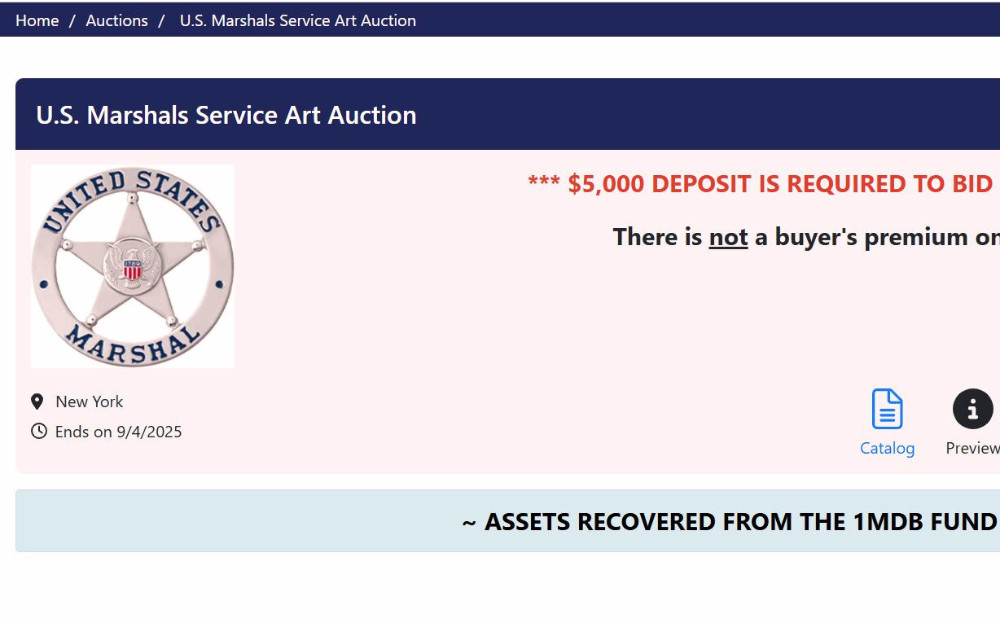It has been five years since one of the biggest scandals involving the 1Malaysia Development Berhad (1MDB) took place. Since then, the United States Government has seized 4 renowned paintings—and they’ve now put these artworks up for auction. This move aims to offer art lovers and collectors a rare chance to own a piece of history.
The auction runs from the 16th July (Wednesday) to the 4th September (Thursday). Furthermore, buyers won’t have to pay any premium fees. However, concerns have already emerged about the entire process. From a questionable website to the drastic drop in starting prices, all eyes are now on these 4 artworks.

According to documents filed by the US Justice Department, one of the pieces, “Child with a Toy Hand Grenade” (1962), photographed by Diane Arbus, initially sold for $750,000 (RM3,189,375). Yet, the current starting bid is only $4,400 (RM18,711). Another piece, “Red Man One” (1982), illustrated by Jean-Michel Basquiat, sold for $9.4 million (RM39.97 million) back in 2012 but now lists at just $2.975 million (RM12.65 million).
Meanwhile, Picasso’s “Tête de taureau et broc” (1939) was acquired for $3.28 million (RM13.9 million) back in 2013. Alongside it, Basquiat’s “Self Portrait” (1982) is currently being auctioned at $850,000 (RM3.6 million). Some advisors speculate that the drastic price drops result from the artworks’ ties to Low Taek Jho, also known as Jho Low (刘特佐), an affiliate of the 1MDB case.


Due to the artworks’ connection to multiple international fugitives and such a high-profile scandal, attracting serious buyers has proven challenging. On top of that, the auction website chosen by the U.S. Marshals lacks the sophistication expected for pieces of this value, which further reduces its appeal. Its overly simple design is so basic that some potential buyers might even mistake it for a scam.
“Most of my clients would not be interested in sitting on this website and bidding on it just because the website is so terrible,” said Arushi Kapoor, an art advisor, in an interview. “If someone sent me this website that wasn’t you, I would probably be like, ‘someone’s trying to scam me.” However, another art advisor pointed out that the rough website might serve as a filter, attracting only well-versed bidders who can look beyond the site’s shortcomings. Ultimately, the combination of scandal and presentation casts a shadow over what could otherwise be a highly sought-after auction.
Source: ARTNews
Zaima Humaira contributed to this article







